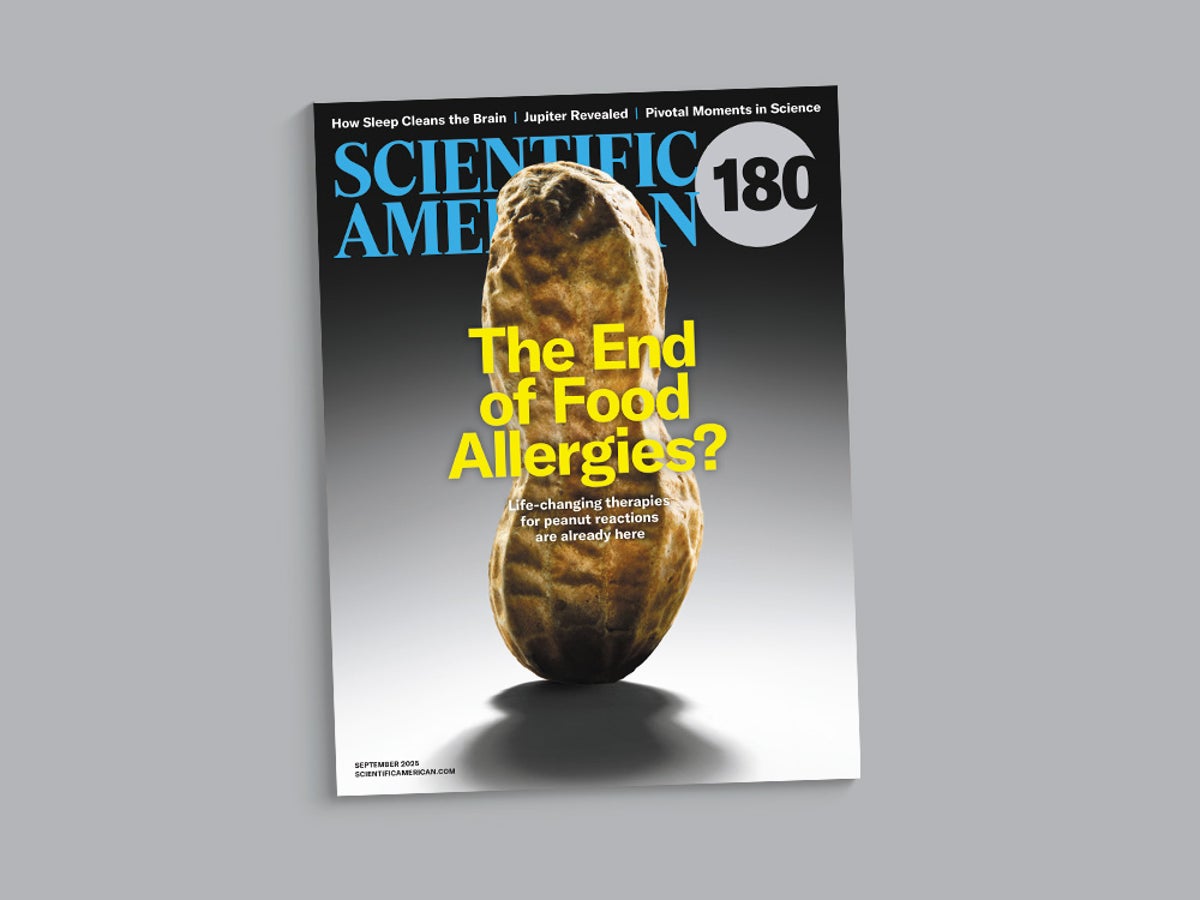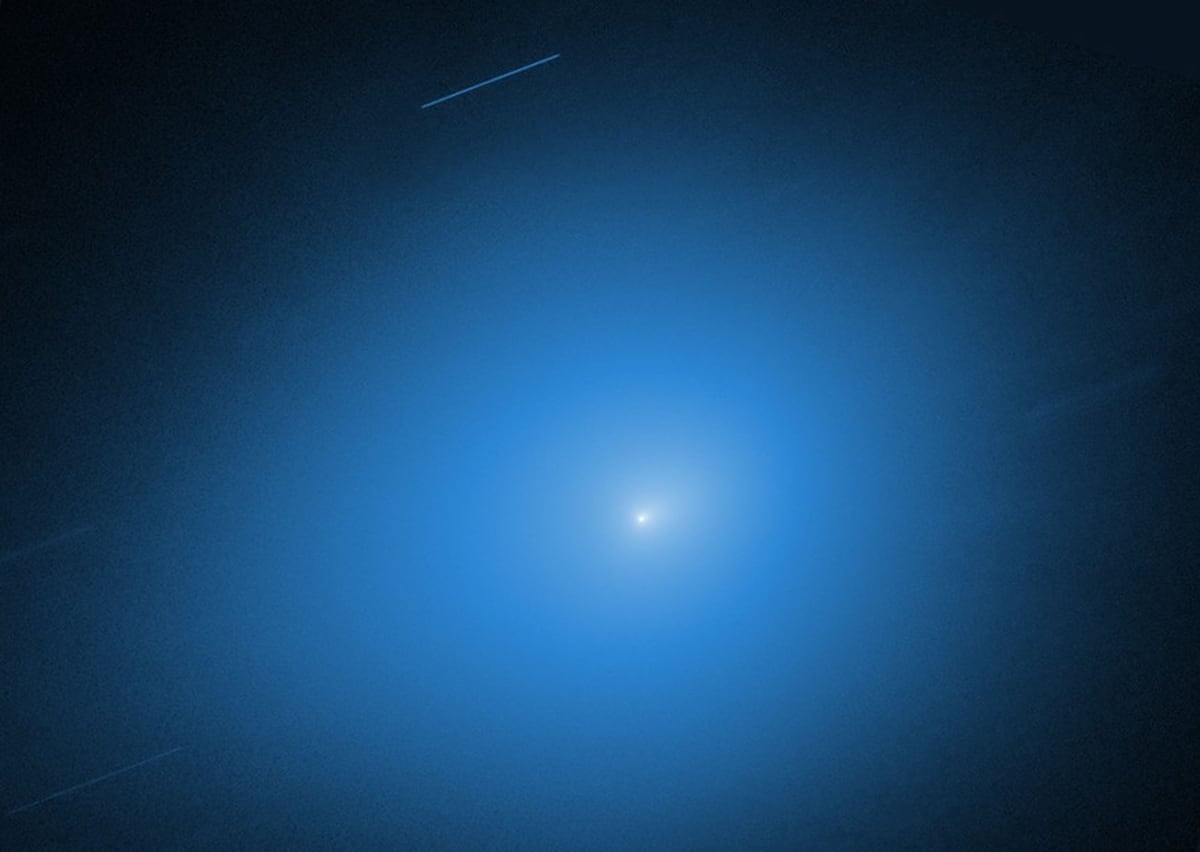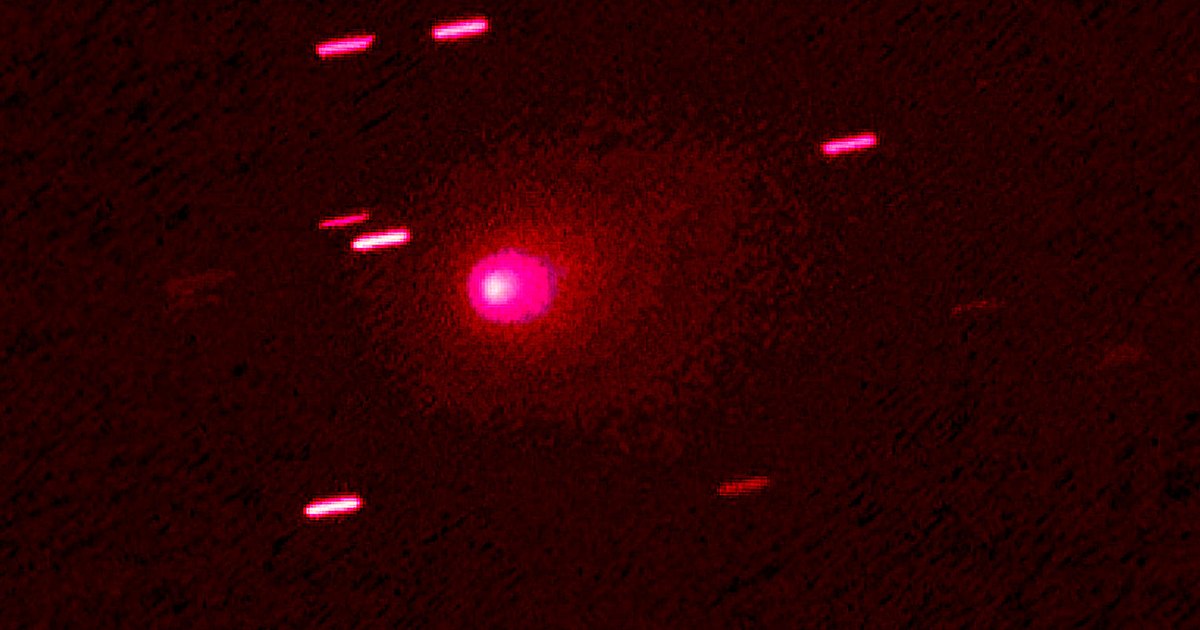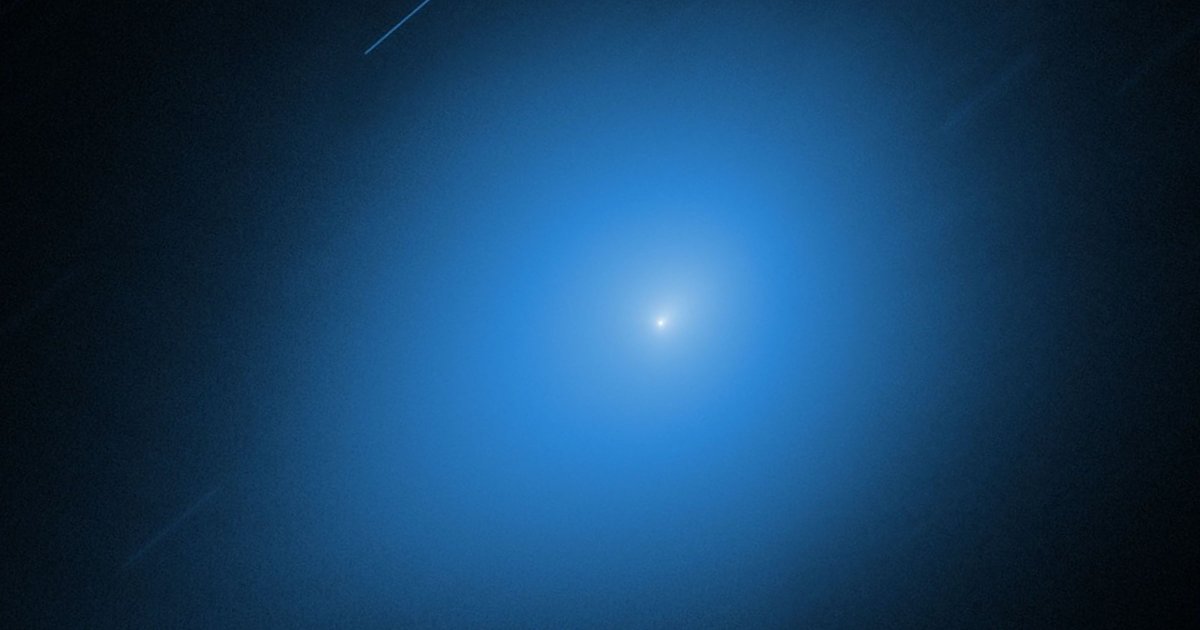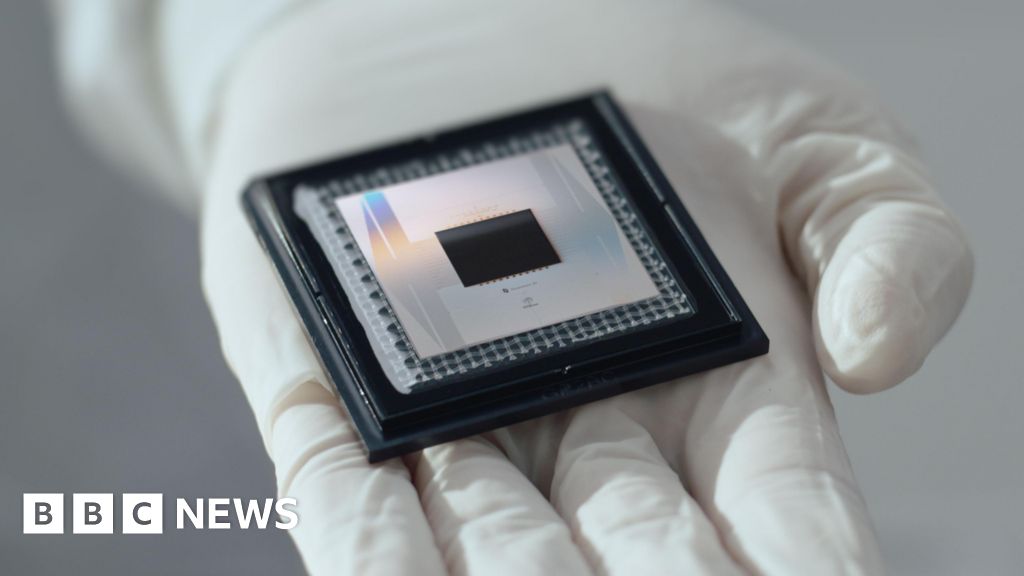Science
Science
[ follow ]
#interstellar-comet #3iatlas #mars #quantum-computing #nuclear-energy #cosmology #james-webb-space-telescope
fromwww.scientificamerican.com
1 hour agoAncient Bones Hid a Buzzing Secret
Thousands of years ago in what is now the Dominican Republic, there was a cave full of bones. And those bones were full of bees. In a paleontological first, researchers have discovered that bees used the jawbones of now extinct mammals as burrows. It's not clear what species of bee was exploiting this grisly opportunityonly their smooth-walled nests were left behind, nestled in the tooth pockets of ancient rodents and sloths.
Science
fromwww.scientificamerican.com
14 hours agoRobot Servants Are Coming. Would You Want One?
In the future, a caregiving machine might gently lift an elderly person out of bed in the morning and help them get dressed. A cleaning bot could trundle through a child's room, picking up scattered objects, depositing toys on shelves and tucking away dirty laundry. And in a factory, mechanical hands may assemble a next-generation smartphone from its first fragile component to the finishing touch.
Science
fromBig Think
20 hours agoAs 2025 ends, the Standard Model still hasn't cracked
Part of the motivation for conducting science is hope: the hope that what you're doing, research-wise, could end up revolutionizing how we conceptualize reality. Although we've come so far in understanding this Universe - including what its laws and constituents are at a fundamental level, and how those fundamental components assemble to create the varied and complex reality we inhabit today - we're certain that there's still more to learn, as many paradoxes about and several important puzzles remain unsolved.
Science
fromwww.theguardian.com
12 hours agoJane Goodall Earth medal to recognise people working to improve the world
The idea of having this medal, and Starmus being entrusted to organising it, is Jane's. Jane said she would like this to happen. And I think it's because of the very special relationship she had with us, he said. Goodall's grandson, Merlin van Lawick, welcomed the award. The Starmus Jane Goodall Earth medal will acknowledge sustainable programmes undertaken to make our world a better place for people, animals and the environment and provide encouragement for the continuation of that work, he said.
Science
fromThe Mercury News
13 hours agoMagnitude 3.1 earthquake is latest to shake near San Ramon
In what has become a common occurrence recently, the ground shook again in San Ramon on Tuesday, this time before sunrise. The magnitude 3.1 quake rattled the Tri-Valley at 5:53 a.m. and was centered about 3.1 miles southeast of San Ramon. There were no initial reports of damages or injuries. The quake came only eight days after three earthquakes shook the area in the course of about 100 minutes.
Science
fromwww.scientificamerican.com
14 hours agoProbiotics Help Only a Few Relatively Rare Diseases, according to Strong Science
There are microbes living in medicine cabinets across the U.S., next to the aspirin and the Band-Aids. And people want them there. Indeed, consumers probably paid good money for them. Probiotics are capsules or pills with live microorganismsalmost always bacteria or yeastthat are supposed to confer health benefits once people swallow them. Some of my friends, including a woman who was recently treated for cancer and a man with persistent digestive issues, bought the pills at the recommendation of doctors.
Science
fromwww.scientificamerican.com
14 hours agoHow Global Warming Could Trigger a Reptile Sexpocalypse
Under no light but the stars, a green sea turtle hauls herself out of the surf and onto the familiar sand of Alagadi Beach on the northern coast of Cyprus. She doesn't notice any predators as she makes her way up the beach; tonight will be the night. When the turtle reaches a satisfactory spot, she nestles into the warm sand and begins excavating a deep pit. Nothing can distract her; she's gone into a kind of trance.
Science
fromThe Atlantic
11 hours agoDay 16 of the 2025 Space Telescope Advent Calendar: The Bullseye
NASA, ESA, I. Pasha, P. van Dokkum Day 16 of the 2025 Space Telescope Advent Calendar: The Bullseye. This recent image of LEDA 1313424, nicknamed the Bullseye Galaxy, was made by the Hubble Space Telescope.
Science
Science
fromNature
2 days agoDespite all the negatives, 2025 showcased the power, resilience and universality of science
In 2025, global science faced funding cuts, political interference and nationalist pressures, yet major health, discovery, innovation, and international cooperation advances endured.
fromMedium
1 day agoLower the surprise: Applying The free energy principle to UX
The brain's main task is to minimize the gap between expectation and reality. This gap is what the Free Energy Principle defines as free energy. When the brain encounters unpredictable input, its stress level rises. And it's crucial to understand: this isn't about you as a person or a "user", it's about your brain. It's not something we consciously control, but it's something we can use.
Science
fromNews Center
1 day agoRNA 'Quality Control' System Breaks Down in ALS - News Center
They focused on UPF1, a protein that acts like a proofreader, scanning RNA and destroying defective copies before they cause trouble. This process, called mRNA decay, is essential for healthy cells. The team discovered that UPF1 and TDP-43 normally work together to control the length of RNA messages - especially at their tail ends. These regions help regulate how long an RNA message lasts and where it goes in the cell. In ALS, these processes go haywire, leading to unstable RNA and stressed neurons.
Science
fromPsychology Today
1 day agoWhy You Do the Things You Do
In August 2025, I published my own attempt at characterizing affect, which I call the Affect Management Framework (AMF; Haynes-LaMotte, 2025). The conceptualization is grounded in the contemporary neuroscience perspectives of Predictive Processing(Clark, 2023) and Active Inference (Parr, Pezzulo, & Friston, 2022). It also draws inspiration from Ecological Psychology (Gibson, 1979; Withagen, 2022) and my own clinical experiences. Below I provide a high-level overview of the AMF, with the intention to explore each of these areas in more detail across other posts.
Science
Science
fromKqed
1 day agoPine Trees, Reindeers and Snowflakes: 5 Winter Wild Videos From Deep Look | KQED
Conifers, reindeer, and snowflakes employ seasonal physical mechanisms—pine cone seed protection and release, cyclical antler growth and shedding, and humidity- and temperature-driven crystal formation.
fromNature
1 day agoTracing pollution in the lives of Arctic seabirds
High up in the Arctic Circle, Olivier Chastel begins his working day by scanning the horizon for polar bears, rifle at the ready. "In 25 years I've never had to use it, but you can't be too careful," he explains. There can't be many conservationists who go birdwatching while armed, but the danger to life from bears in Svalbard - the largest island of the Norwegian polar archipelago - is so high that it's a legal requirement.
Science
fromPsychology Today
1 day agoDraw a Scientist
What I asked them to do was simple; I said, "Draw a scientist." I didn't give them any other directions. I didn't make up this experiment-researchers have been asking children of various ages to "Draw a scientist" for more than five decades. They don't do this because they are interested in children's art; instead, they are interested in how children think about scientists and, more specifically, whether they think of them as male or female.
Science
fromwww.scientificamerican.com
1 day agoHeat Records, Mpox Mutations, Baby Health Risks and Hobbits
Kendra Pierre-Louis: For Scientific American's Science Quickly, I'm Kendra Pierre-Louis, in for Rachel Feltman. You're listening to our weekly science news roundup. First up, the European Union's Copernicus Climate Change Service reported last Monday that 2025 is shaping up to be the second-hottest year on record, with data suggesting it will tie with 2023 for runner-up status. To learn more about what this means, we are talking to Andrea Thompson, senior desk editor for life science here at Scientific American. Hi, Andrea.
Science
fromWIRED
2 days agoHow Do Astronomers Find Planets in Other Solar Systems?
Even the closest exoplanets are more than 4 light years away (36 trillion miles), which makes it doubtful that we'll ever visit one-so why bother? The reason is, it helps us answer an age-old question: Are we alone in the universe? As far as we understand, you need a planet to have life, and the race is on to locate one with Earth-like qualities.
Science
fromBig Think
3 days agoStarts With A Bang podcast #124 - Astrochemistry
They can directly collapse to a black hole, they can become core-collapse supernovae, they can be torn apart by tidal cataclysms, they can be subsumed by other, larger stars, or they can die gently, as our Sun will, by blowing off their outer layers in a planetary nebula while their cores contract down to form a degenerate white dwarf. All of the forms of stellar death help enrich the Universe, adding new atoms, isotopes, and even molecules to the interstellar medium:
Science
fromPsychology Today
3 days agoNew Study Shows "Teen" Brain Development Continues to Age 32
For decades, my colleagues and I advanced the premise that early substance use-nicotine, alcohol, or cannabis (or other addicting drugs)-interferes with critical maturation stages, particularly adolescence. Some questioned the science behind these premises, while others said it was propaganda from people disapproving of drugs like cannabis to justify their views. Despite this, clinicians often conveyed the cautionary: "The adolescent brain is still developing," or "Drugs hurt the teenage brain."
Science
fromFlowingData
5 days agoScale of living things
Neal Agarwal published another gift to the internet with Size of Life. It shows the scale of living things, starting with DNA, to hemoglobin, and keeps going up. The scientific illustrations are hand-drawn (without AI) by Julius Csotonyi. Sound & FX by Aleix Ramon and cello music by Iratxe Ibaibarriaga calm the mind and encourage a slow observation of things, but also grow in complexity and weight with the scale. It kind of feels like a meditation exercise.
Science
Science
fromTelecompetitor
4 days agoConnect Everyone Coalition enlists groups to modernize space development policy
Twenty organizations urged nine federal agencies to modernize commercial space policy and reduce redundancies in approvals, environmental reviews, range safety, and LEO scheduling transparency.
from24/7 Wall St.
4 days agoThese Are the Top Uranium-Producing Countries in the World
Uranium is a weakly radioactive metal that is found in many parts of the world in low concentrations. It emits alpha, beta, and gamma particles that can be cancer-causing if exposure is intense and long-lasting enough. At weaker concentrations, it is used for nuclear medicine and other research purposes. The half-life of uranium is extremely long, ranging from 159,200 to 4.5 billion years, depending on the isotope. This makes it useful for dating the age of geologic strata and estimating the age of the Earth.
Science
Science
fromdesignboom | architecture & design magazine
4 days agopompeii still stands because ancient romans used self-healing concrete that lasts for decades
Romans used hot-mixing of dry lime and volcanic ash to create self-healing concrete with quicklime clasts that dissolve later to repair cracks.
fromPsychology Today
4 days ago2 Ways to Use Your 'Negative Self-Talk' to Your Advantage
Negative self-talk was found to have a positive impact and lead to better performance on the second round of the test. This happened possibly because it created a state of heightened attention and internal motivation. People became more alert and focused after criticizing themselves. Positive self-talk was linked to changes in brain connectivity that improved executive functions such as planning, reasoning, and decision-making. However, it also gave rise to a degree of false confidence.
Science
fromwww.scientificamerican.com
4 days agoTimekeeping on Mars Is a Tall Order. Here's Why
It also spins on its axiscompleting one Mars dayin 24 hours, 39 minutes and 35 seconds (to distinguish this period from an Earth day, we call it a sol, referencing the Latin word for the sun). Keeping track of your schedule on Mars would be different than doing so on Earth. But still, at its core, it would just be a matter of conversion.
Science
fromPsychology Today
5 days agoA Peculiar Subset of Near-Death Experiences
NDEs occasionally include encounters with deceased individuals whose death was unknown to the experiencer. If NDEs were driven by expectation, accurate perceptions of unknown (and surprising) facts should not occur. Though rare, such experiences are reported with enough regularity to warrant systematic investigation. A new research protocol aims to document such cases with greater rigor than has previously been possible.
Science
fromwww.scientificamerican.com
4 days agoMoths Seen Drinking Moose Tears for the First Time Ever
When animals cry, moths start licking their chops. The less glamorous relatives of butterflies have been known to use their long proboscis to sip the tears of everything from birds to reptiles to even domestic animals. But the behavior, known as lachryphagy, has been mostly observed in the tropics. Now, for the first time, researchers have documented moths drinking the tears of a moosejust the second time the behavior has been documented outside of the tropics. (The other was observed with a horse in Arkansas.)
Science
fromIndependent
4 days ago'People no longer wanted to be associated with the traditional, local way of speaking': Are Irish accents as we know them dying out?
With hundreds of lilts and cadences across our small island, the ever-changing sound of an Irish voice isn't a new phenomenon - and, of course, it's always the kids' fault
Science
fromTheregister
5 days agoSpace-power startup claims it can beam energy to solar farms
You can't generate solar power at night unless your panels are in space. A startup that wants to beam orbital sunlight straight into existing solar farms has just emerged from stealth, claiming a world-first power-beaming demo, but with a lot of critical information left unreported. Overview Energy announced on Wednesday that, after three years developing its technology in stealth mode, it managed to get a Cessna Caravan plane to send power to a solar installation on the ground from an altitude of 3 miles
Science
fromTheregister
6 days agoNASA loses contact with MAVEN Mars orbiter
The aerospace agency revealed the issue in a Tuesday post that explained recent telemetry from the craft suggested all its systems were working as intended. After NASA received that data, MAVEN swung behind Mars, and therefore lost contact with Earth as its radios can't send data through a planet. But when MAVEN's orbit brought it back into view, ground stations on Earth could not detect any signal from the probe.
Science
fromwww.nature.com
6 days agoAuthor Correction: Conservation and alteration of mammalian striatal interneurons
Author Correction: Conservation and alteration of mammalian striatal interneurons Author Correction Open access Published: 11 December 2025 Emily K. Corrigan orcid.org/0000-0002-9072-72911,2, Michael DeBerardine orcid.org/0000-0002-5220-03413 na1, Aunoy Poddar1,2,4 na1, Miguel Turrero Garcia orcid.org/0000-0002-7294-169X1,2 na1, Sean de la O1, Siting He3, Harsha Sen5, Mariana Duhne2, Shanti Lindberg6, Mengyi Song1,2, Matthew T. Schmitz7, Karen E. Sears orcid.org/0000-0001-9744-96026,8, Ricardo Mallarino orcid.org/0000-0002-8971-48645, Joshua D. Berke orcid.org/0000-0003-1436-68232,9,10,11, Corey C. Harwell orcid.org/0000-0002-8043-58691,2,9,12, Mercedes F. Paredes orcid.org/0000-0003-2503-14471,2,9,12, Fenna M. Krienen orcid.org/0000-0002-1400-68203 & Alex A. Pollen orcid.org/0000-0003-3263-86341,2,9,11
fromwww.dw.com
5 days agoIndia wants its people in space. Is it politics or science? DW 12/11/2025
India was due to send its own spacecraft, crewed with its own astronauts, into orbit in 2022. But COVID-19 and a series of technical setbacks have consistently delayed the Gaganyaan mission's progress. ISRO the Indian Space Research Organization has now certified its LMV3 launch rocket for human travel and is aiming to complete three uncrewed launches of the Gaganyaan spacecraft in 2026. If things go to plan, three astronauts (or "Gaganyatris") selected from air force pilots Prasanth Balakrishnan, Ajit Krishnan, Angad Pratap and Shubhanshui Shukla, will be strapped in for the maiden voyage. The earliest that launch could take place is 2027.
Science
Science
fromTelecompetitor
5 days agoEPB and Vanderbilt University launch innovation institute for quantum technology research
EPB and Vanderbilt will establish the Institute for Quantum Innovation in Chattanooga to advance quantum research, commercialization, workforce development, and regional economic growth.
[ Load more ]
